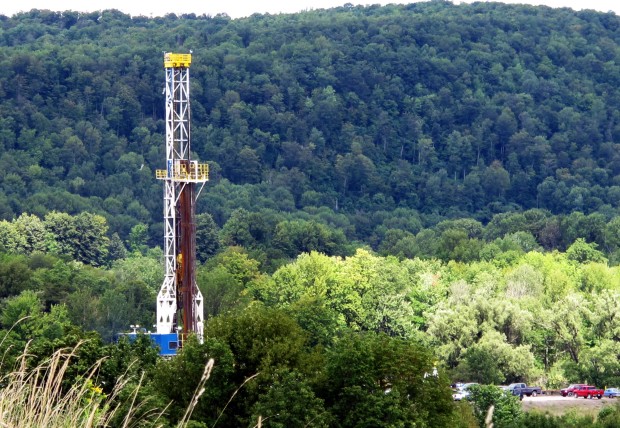DCNR releases first Marcellus monitoring report
How is Marcellus Shale natural gas drilling affecting Pennsylvania’s state forests? A new report released Wednesday by the state Department of Conservation and Natural Resources offers mixed results.
“First and foremost is that shale-gas production on state forest lands is neither benign nor catastrophic,” Dan Devlin, acting deputy secretary for Parks and Forestry, wrote in the preface. “There are clearly impacts and tradeoffs associated with this activity. The question is what tradeoffs are acceptable.”
DCNR officials presented the 265-page report at a meeting of the agency’s natural gas advisory committee Wednesday in State College.
Chairman Jim Grace said the report was well received by the committee, which includes academics, as well as representatives from the industry and environmental groups.
“Overall, there was less surface disturbance than I thought there might be,” said Grace, a Penn State Professor of Forestry.
Of the more than 2 million acres of state forest land, about 1,500 acres have been converted to roads, well pads, pipelines and compressor stations. Since most of the development has taken place in only the last eight years, the DCNR found that none of the sites have been completely restored. While forest fragmentation is a concern, the problem has been mitigated by encouraging development near existing infrastructure.
Development has also resulted in a 9,340-acre increase in “semi-developed and developed” areas. The DCNR also documented an increase in non-native, invasive plants and pests which tend to spread in developed areas.
It is the first public report from the DCNR’s $6 million Marcellus monitoring program since it was launched more than three years ago. The wait has frustrated environmental groups who have been eager for information about how drilling is impacting state forests.
While they are still digesting the lengthy report, chairman Jim Grace said the committee is already recommending that DCNR release more information each year. The initial findings only offer data through 2012.
“The data’s collected on a regular basis, so reporting the annual totals shouldn’t be very hard,” said Grace, who hopes to see 2013 data released this year.
Drilling in Pennsylvania’s state forests is still in its early stages with only about 570 wells out of a possible 3,000 based on the amount of land that has been leased for drilling. The activity has generated $582 million in revenue from leases and royalties through 2012.
There is currently a moratorium on new gas leases in state parks and forests. In his 2014 budget proposal, Governor Tom Corbett calls for new leasing of the state’s mineral rights for “non-impact drilling” under which gas companies would not be allowed to construct new well pads. Instead, they could lease new underground mineral rights near existing drilling sites or through private property adjacent to public land.
The administration says the proposal could immediately raise $75 million through leasing with more coming later on as royalties.
Despite the release of the DCNR’s Marcellus monitoring report and the promise of more information to come, environmental groups remain skeptical about opening more land to drilling.
“The suggestion that this industrial activity can be ‘carefully managed’ provides scant comfort to Pennsylvanians who frequent Penn’s Woods,” said PennFuture president Cindy Dunn in a statement. “Carefully-managed industrialization is still industrialization, so the need for a moratorium on leasing of state forests and parks to drillers remains.”
The DCNR is inviting the public to comment on the report by participating in an online survey. The agency will also conduct an online seminar that the public can participate in on Monday, April 21, at 1:30 p.m.

















